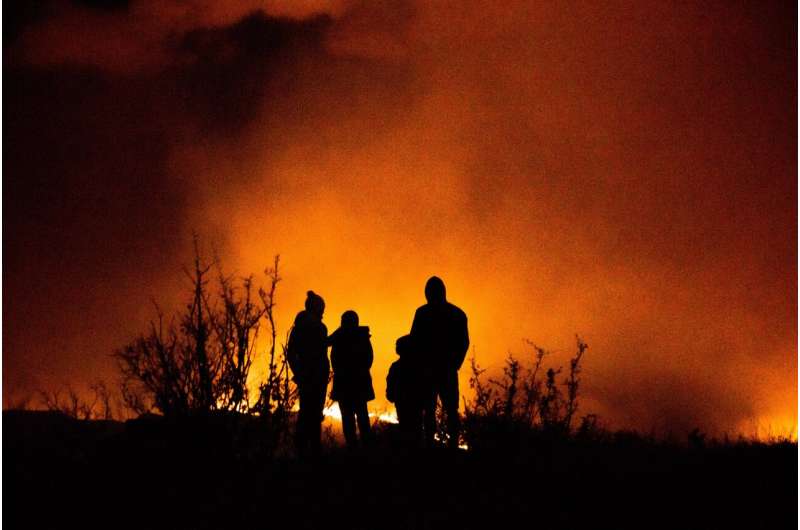This article has been reviewed according to Science X's editorial process and policies. Editors have highlighted the following attributes while ensuring the content's credibility:
fact-checked
proofread
Helping more people get to safety in a wildfire

Wildfires pose an increasing threat to communities at the wildland-urban interface (WUI)—where dry, flammable vegetation borders backyards, often in remote locations. Despite the well-known danger, many communities at highest risk do not have a strong wildfire evacuation plan in place. (One of these was the town of Lahaina on Maui, where wind-driven wildfires killed nearly 100 people in August 2023.)
Researchers from UCLA's John Garrick Institute for the Risk Sciences have built a new web-based software platform that allows emergency planners to design custom-made evacuation plans for their communities that will help more people safely escape an oncoming wildfire.
The results of a first test of the tool, using the deadly 2018 Camp Fire in California as an example, were presented by Mohammad Pishahang at the annual meeting of the Society for Risk Analysis (SRA), held Dec. 10–14 in Washington, D.C.
The Wildfire Safe Egress planning (WISE) simulation platform is a visual, Geographic Information Systems (GIS) environment that allows users to simulate several wildfire scenarios on a map and calculate the likelihood of the safe evacuation of a population. It incorporates data on the demographics and road network of a community and allows users to input specific factors such as fire dynamics, community boundaries, warning system parameters, and shelter locations.
It is the first wildfire evacuation planning tool to also include several factors affecting human behavior in emergency situations such as age, income level, English proficiency, disabilities, and vehicle ownership (all of which impact a household's decision to evacuate).
The Camp Fire of 2018
To demonstrate WiSE and its capabilities, Pishahang and his colleagues recently simulated an evacuation of the entire city of Paradise during California's deadliest wildfire: the Camp Fire of 2018, which killed 85 people.
For the simulation, they set the "awareness trigger time" (one of the data inputs) to just one hour before the fire entered the city, and they assumed that the warning system completely failed. "This is consistent with the real-life events in which the official evacuation warnings failed to reach the population successfully," says Pishahang.
In this simulation, the researchers found that only 16% of the at-risk community population had the opportunity to safely exit the danger zone. Consequently, 84% of the population evacuated while already facing the fire and being surrounded by it (not considered to be a safe evacuation). These results were qualitatively validated by the firefighters who served in the Camp Fire disaster.
When they shortened the pre-evacuation time (i.e. indicating faster decision-making and action by the at-risk people) and accounted for a better (working) warning system in a second simulation, they discovered that:
- if the community had two hours to exit the area in the same situation, more than 40% of the population could have left the danger zone before the fire reached the borders of the city; and
- if only 20% of the at-risk people had been made aware of the need to evacuate by an official warning system one hour before the fire reached the city borders, still more than 44% of the residents would have had the opportunity to safely exit the danger zone.
"These findings demonstrate how WiSE can help emergency managers design the best possible evacuation plan and indicate the best evacuation preparation strategies for their community that are based on data and maximize the number of people who can safely escape an oncoming wildfire," says Pishahang.
For each wildfire scenario, the program identifies main bottlenecks and traffic congestion points so planners can address these issues before a natural disaster occurs.
"Many existing WUI communities do not sufficiently meet evacuation-related travel needs, including suburbs built with only one road in and out," says Pishahang. "WiSE can help planners see how to decrease a community's vulnerability by increasing road traffic capacity in addition to improving the reliability of communication and warning systems and educating residents on how to follow evacuation orders in event of an emergency."
More information: WiSE: Wildfire Safe Evacuation Planning and Management—Wednesday, December 13, 8:30-8:50 a.m.
Provided by Society for Risk Analysis





















